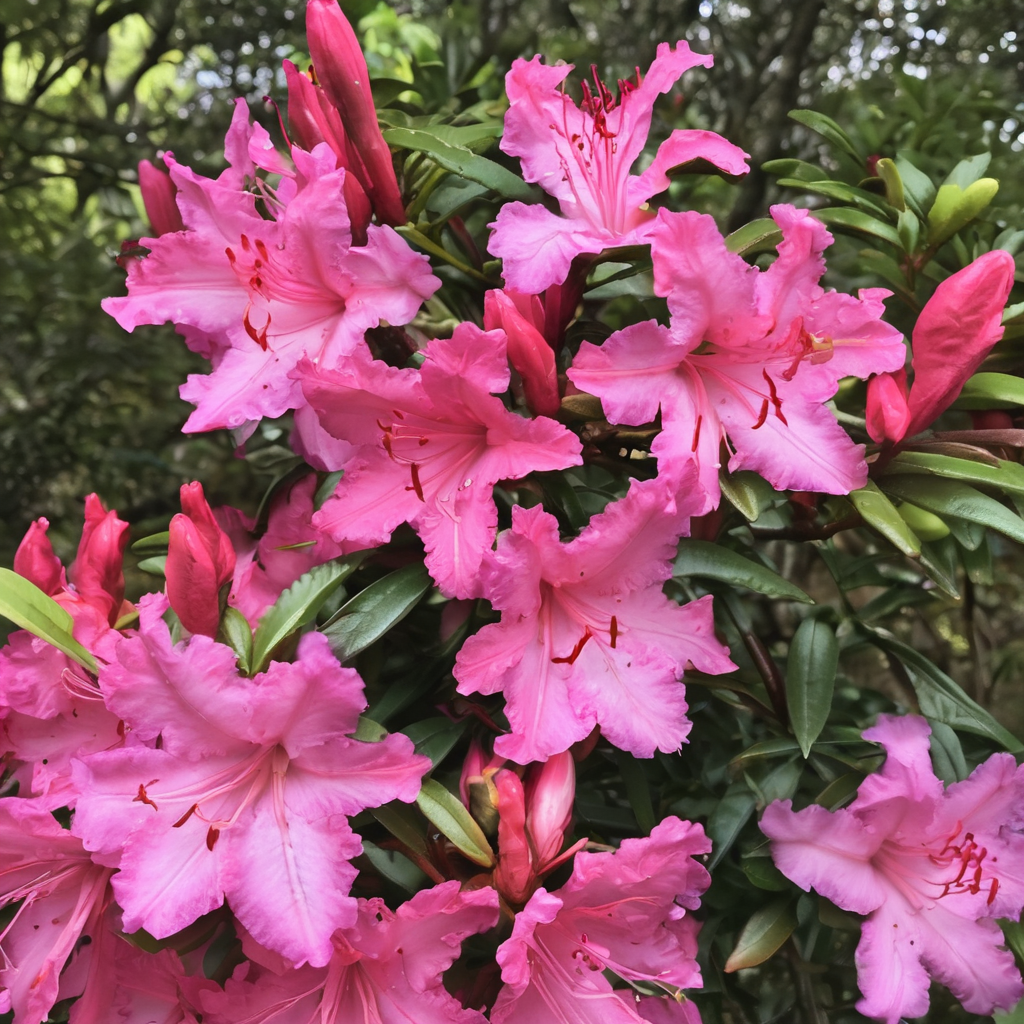Choosing the right azalea variety for your garden involves considering several factors, from climate compatibility to soil preferences. This decision can impact the vibrancy and health of your garden, guiding you toward a flourishing landscape filled with color and life.
Selecting the Right Azalea Variety
Evergreen azaleas, cherished for their year-round foliage, suit milder climates and tend to bloom profusely in spring. Their leaves, green throughout the year, vary from light to dark shades, adding a persistent splash of greenery to the garden.
Deciduous azaleas drop their leaves in the fall, displaying a spectacular autumn display of vibrant colors before going bare in winter. These varieties usually have larger blooms and a wider range of colors, from golds to oranges and fiery reds. Some deciduous azaleas also emit delightful fragrances, an attribute less common in their evergreen counterparts.
Understanding your USDA hardiness zone is key to choosing azaleas that will thrive in your local climate. Cooler zones up to zone 5 may focus on hardy deciduous varieties that can withstand harsh winters, while zones 6 through 9 provide a range for cultivating both evergreen and deciduous azaleas.
Azaleas prefer some morning sunshine but dislike harsh afternoon sun, thriving under light shade. The specific variety chosen should align with these conditions. Azaleas also prefer well-draining soil that retains moisture but does not stay wet. A slightly acidic soil pH between 5.5 to 6.0 is ideal for most azaleas.
Pairing these prerequisites with your garden’s specific conditions helps in selecting the right azalea. The ‘Rosy Lights’ variety, part of the cold-hardy ‘Northern Lights’ series, is perfect for gardeners in chillier climates. ‘Golden Lights’ dazzles with golden-orange blooms, offering a hardy plant with eye-catching color.
Tailoring your azalea choice ensures your garden not only survives but thrives across changing seasons. Notching up your knowledge with local frost dates and observing existing garden conditions can transform your space into an awe-inspiring landscape dotted with the beauty of well-chosen azaleas.

Planting and Soil Conditions
Azaleas prefer acidic soil with pH values between 4.5 and 6.0. Straying too far from these levels could hinder their ability to absorb nutrients efficiently. Soil testing kits are available at most garden centers to check and adjust your soil’s acidity.
Amending the soil may be necessary to create a haven for azaleas. Sphagnum peat moss or elemental sulfur can help lower the pH to the desired acidic range.
Azaleas love a spot with partial sunlight, such as dappled shade beneath tall trees. Direct afternoon sun might be too harsh for the delicate flowers, so aim for morning light and afternoon shade.
When planting, dig a hole as deep as the root ball but twice as wide. Mix in organic matter like compost or peat moss with the removed soil for added nutrition.
Azaleas have a shallow root system, emphasizing the need for well-drained but moist soil. Waterlogged conditions can lead to problems like root rot. After planting, apply a layer of mulch around the base to retain moisture, suppress weeds, and keep the roots cool.
By paying attention to soil acidity and ensuring proper planting techniques, you lay the groundwork for your azaleas to thrive. They’ll reward you with vibrant colors, potentially transforming your garden into an oasis of continuous blooms.
Watering, Feeding, and Mulching
Watering, feeding, and mulching are essential practices for keeping your azalea shrubs flourishing.
Watering Azaleas
Azaleas enjoy consistent moisture—neither waterlogged roots nor dry spells. Water deeply once a week, adjusting based on weather conditions. A finger test, checking the soil about an inch deep, will help you determine if it’s time to water again. This method promotes a strong root system and better drought resistance.
Feeding Azaleas with the Right Fertilizer
Azaleas need acidic soil closely mirroring their natural habitat. An annual application of a fertilizer designed for acid-loving plants, ideally applied in late winter or early spring, works well.
Products labeled as Rhododendron or Azalea food are perfect and will help maintain soil acidity1. Follow application directions to avoid overfeeding, which can harm your plants.
The Benefits of Mulching
Mulching keeps the root zone moist and cool, suppresses weed growth, and adds organic matter to the soil as it breaks down. A 3-inch layer of organic mulch such as pine needles, shredded bark, or leaf mold is ideal2. Maintain a small gap around the stem to prevent moisture buildup and potential root rot or fungal diseases.
By incorporating these practices into your gardening routine, your azaleas will thrive, adorning your landscape with breathtaking flowers for years to come. With routine watering, appropriate fertilization, and strategic mulching, you can effortlessly maintain these stunning additions to your garden.
Selecting the appropriate azalea variety is pivotal for any gardener aiming to enhance their outdoor space. By aligning your choice with local climate conditions, soil type, and sunlight exposure, you can ensure that these beautiful shrubs not only survive but also thrive, bringing joy and color to your garden year after year.
References
- Whitman, Deborah. “Fertilizing Azaleas and Rhododendrons.” Oregon State University Extension Service, 2016.
- Kluepfel, Marjan, Bob Polomski, and Joey Williamson. “Growing Azaleas and Rhododendrons.” Clemson Cooperative Extension, 2008.
